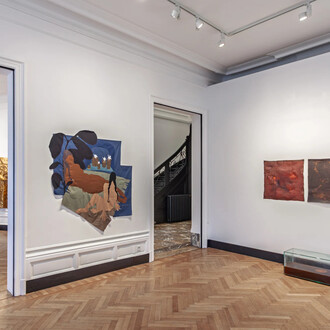The design of the gallery is inspired by Islamic architecture. External light is tempered by a mashrabiyya, a wooden, wickerwork screen used in traditional building in the Near and Middle East to keep out sunlight and heat, but nevertheless to allow ventilation. A reconstruction of a mosque from North-western Pakistan, which integrates original elements in woodcarving, serves further to evoke that architecture. A mezzanine along the length of the gallery is equipped for temporary exhibitions.
The permanent collection is displayed per region and per period, the chronology linking up with that of the Department of the Old Near East. A chronological strip and map projections, together with architectonic ensembles, serve to place the objects in their wider context. Supplementing all this are the audio-guide (we are led round by the 14th-century Arabic philosopher and sociologist, Ibn Khaldun), the catalogue and thematic visitor’s guides, as well as publications for the young.
This piece of velvet is probably the oldest preserved Osman example in the world. What makes it a masterwork is the closely woven structure, the quality of the silk and the gold thread, and the deep carmine red colour, obtained through the use of Armenian cochineal dye. The çintamani pattern, with its double, undulating lines and groups of three spots of varying sizes, appears to have originated in the Far East. In the Islamic world, the double, undulating lines refer to tiger stripes and the spots to the coat of a leopard. The combination of the two motifs in the çintamani pattern symbolizes power and strength; the name – literally ‘happiness-bringing jewel’ – indicates that the pattern had a positive significance.
















